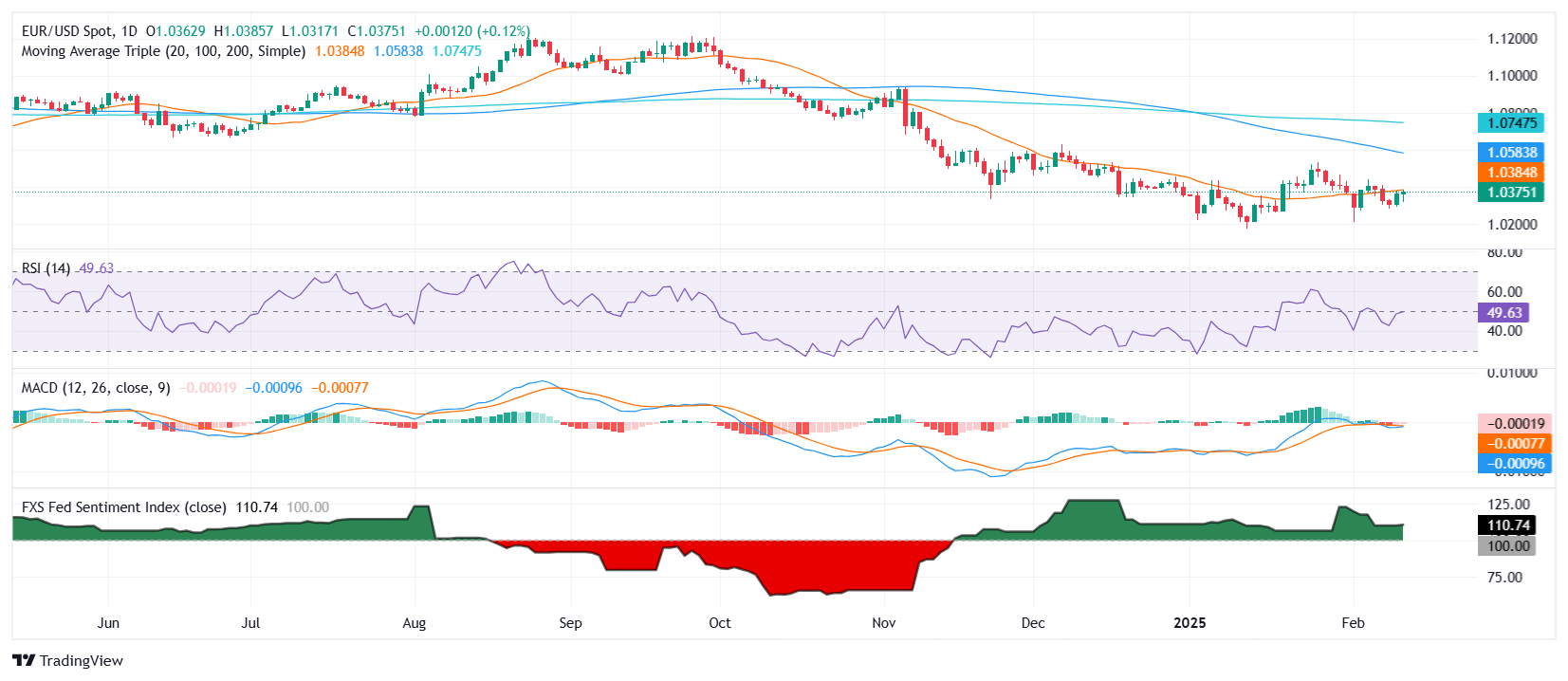EUR/USD Price Analysis: Bulls push higher but face key resistance
- EUR/USD rises to 1.0375 on Wednesday, extending its recovery.
- Momentum builds, but the pair struggles to clear the 20-day SMA.
- RSI ticks higher while MACD remains neutral, suggesting cautious optimism.
The EUR/USD pair edged higher to 1.0375 on Wednesday, as buyers extended their recent recovery efforts. However, the rally met resistance at the 20-day Simple Moving Average (SMA), a key technical barrier that has previously dictated short-term direction. The pair’s ability to consolidate above this level could determine the next major move.
Technical indicators reflect mixed momentum. The Relative Strength Index (RSI) has risen but remains below the neutral 50 mark, signaling ongoing market hesitation. Meanwhile, the Moving Average Convergence Divergence (MACD) histogram prints flat green bars, suggesting that while bearish pressure is fading, a strong bullish trend has yet to materialize.
From a structural perspective, the pair remains within a broader consolidation phase, with resistance at 1.0400 and support at 1.0350. A sustained break above the 20-day SMA could fuel a run toward 1.0450, while failure to hold gains may lead to renewed selling pressure toward 1.0320.
Beyond technical levels, fundamental factors could play a decisive role in shaping near-term price action. Recent USD moves have been closely tied to shifting rate expectations and Federal Reserve rhetoric. If incoming data or central bank commentary reinforces the need for higher-for-longer rates, EUR/USD could struggle to sustain upside attempts. For Wedneday's session, investors will factor in fresh inflation data from the US released during the European session and Jerome Powell's testimony in Capitol Hill.
EUR/USD daily chart


